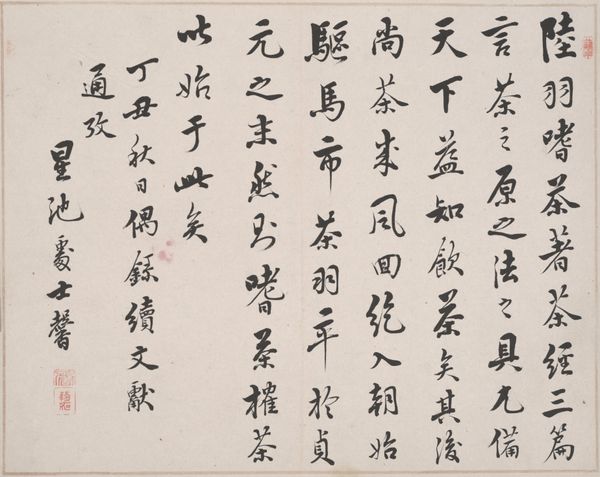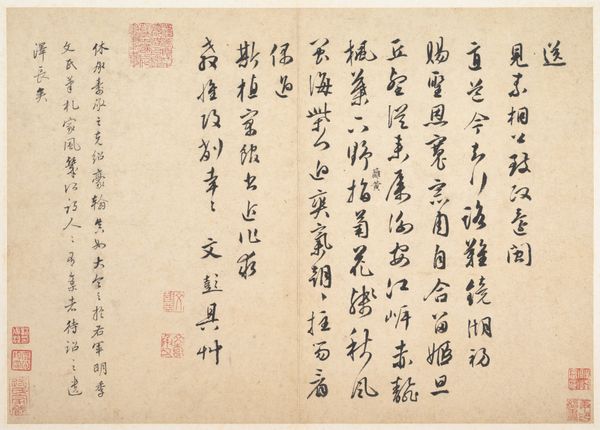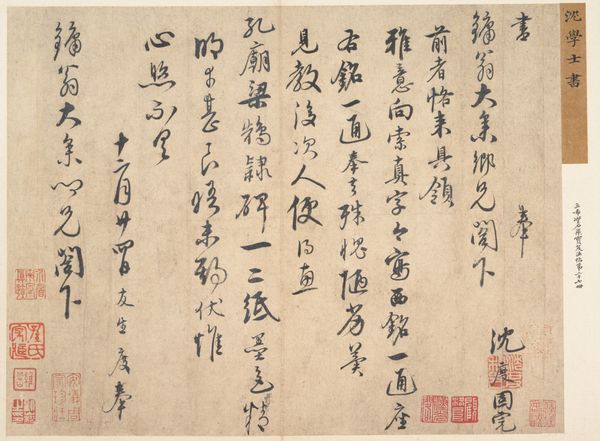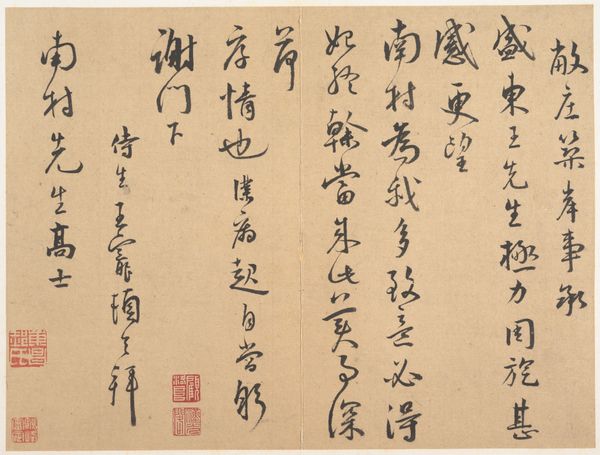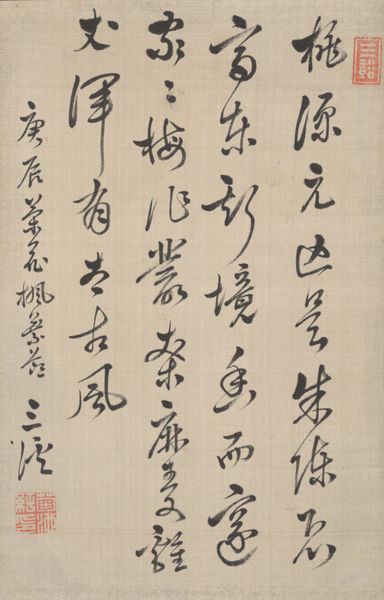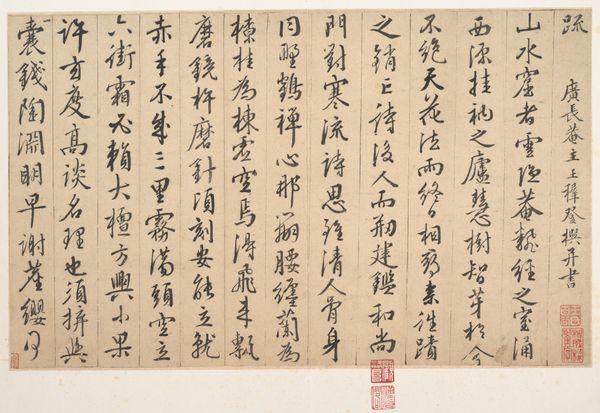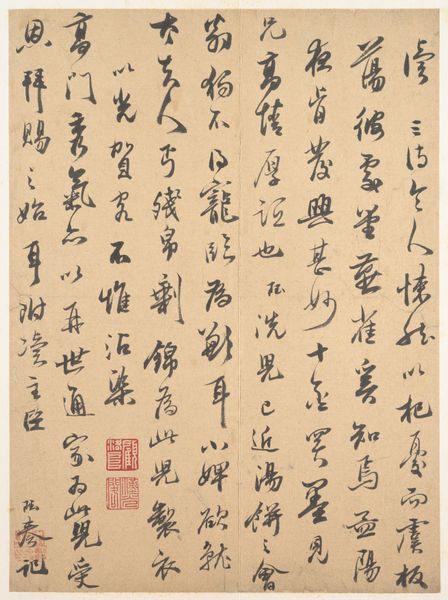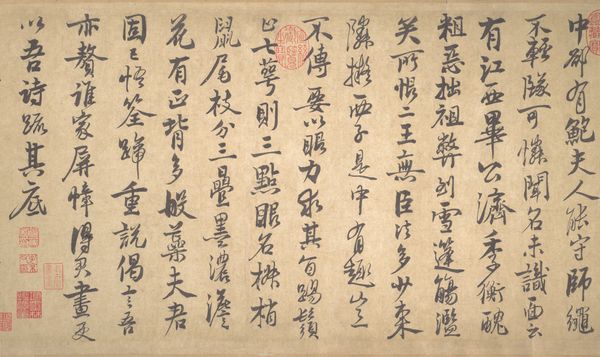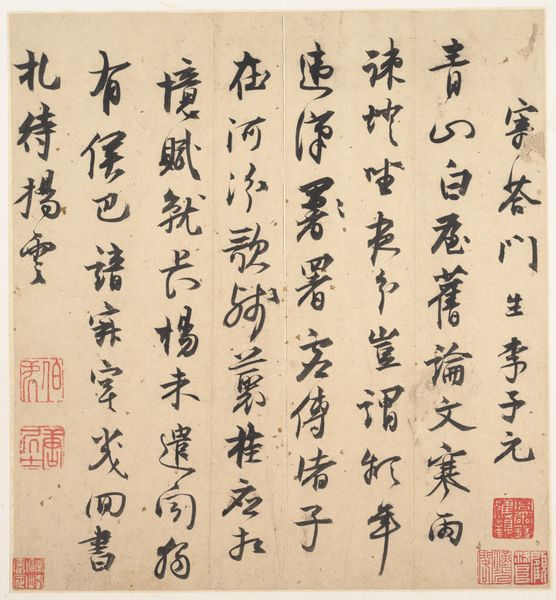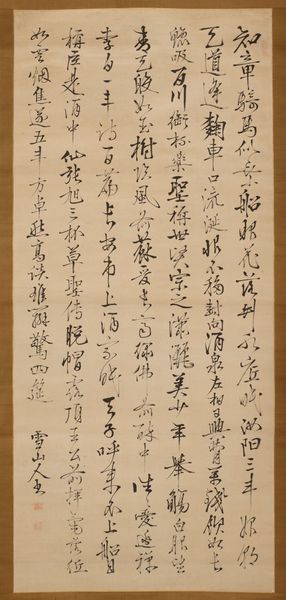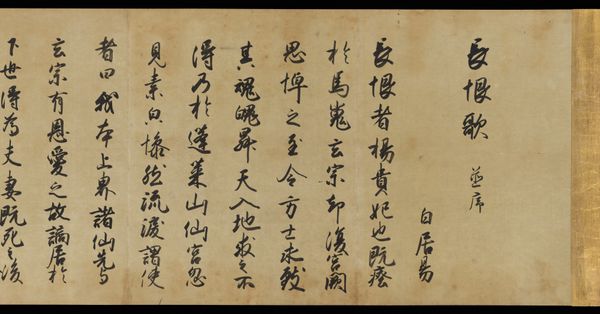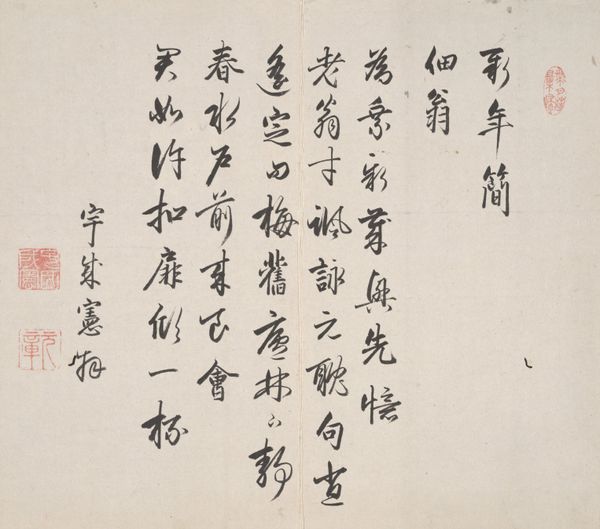
#
asian-art
#
22_ming-dynasty-1368-1644
#
china
#
calligraphy
Dimensions: Image: 10 3/4 × 25 1/4 in. (27.3 × 64.1 cm) Image (with title strip): 10 3/4 × 25 7/8 in. (27.3 × 65.7 cm)
Copyright: Public Domain
Curator: This remarkable piece is "Letter to Xu Shangde" by Tang Yin, dating to the Ming Dynasty, specifically between 1470 and 1524. It now resides at the Metropolitan Museum of Art. The medium is, of course, calligraphy, showcasing his refined brushwork. Editor: Immediately, the visual rhythm strikes me. The arrangement of the characters creates a sense of both controlled precision and spontaneous energy. What mood does that strike in you? Curator: The flow of ink across the paper reflects not just artistic skill, but also the societal context in which Tang Yin operated. The letter as a form was so closely linked to officialdom. Examining its materiality lets us think about ink production, the role of paper, and the highly skilled labor required for calligraphy. It moves past mere decoration. Editor: And beyond labor and means of production, consider the symbolic weight carried in the very act of writing a letter in this manner! The flowing lines echo the Confucian ideal of a cultivated scholar-official. I detect melancholy here, in the poem’s lament of lost connections and former glories – even its form carries an echo. Curator: Absolutely, because without a market for such craftsmanship and paper, no expressive poem is possible to consider at all. Editor: Well, for me, that visual language speaks to something deeper than mere function, echoing classical aesthetics even amidst personal expression. Curator: Yes, and looking at its material choices, you realize the kind of cost which then, translates to prestige that may eventually influence any visual language. Editor: It brings this intimate connection to mind, one preserved through these visual symbols across the centuries. Curator: Seeing how meticulously crafted the components and conditions are shows how far the context shapes form and ideas. Editor: This blend of formal refinement and personal emotion really makes this more than just skillful brushstrokes on paper. The piece resonates deeply through time, culturally speaking.
Comments
No comments
Be the first to comment and join the conversation on the ultimate creative platform.

